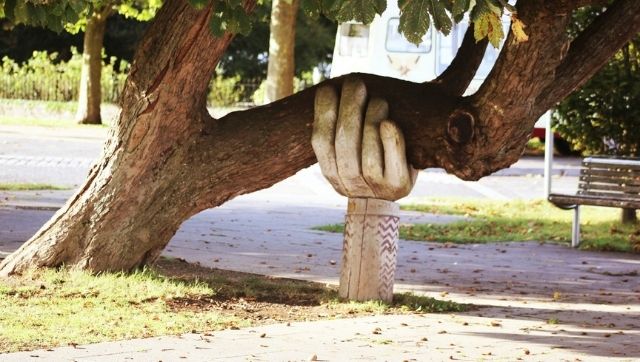In this lectionary passage (1 Kings 8: (1, 6, 10-11), 22-30, 41-43), Solomon dedicates the Temple. It is the culmination of many chapters (and years) of labor – from the promise first given to David through the struggle for his successor and finally the building of the Temple itself. Scholars agree, however, that this passage was most likely written (or at least edited) during the period of the exile or later, and this late date adds an interesting layer to what might otherwise be the text of a simple ritual dedication.
On the one hand we have the completion and dedication of an impressive Temple that is so filled with the glory of God that even the priests cannot stand to minister inside of it. The Temple becomes the ultimate symbol of God’s presence with the people. It is the direction towards which Israelites will now turn to pray and the place in which they will seek God.
On the other hand, we know from later generations that the exile and the destruction of the Temple challenged this theology of the presence of God and we can see elements of this reflected in the passage as well. There is the acknowledgement that this is the dwelling place of the Lord and in the very next breath the question of how any place could contain the God. The imminence of God is challenged by the transcendence of God and the Temple becomes a conflicted symbol: is it the dwelling place of God or not?
One thing is clear, at least prior to the exile: the Temple is a communal symbol. The Temple serves to gather the people’s attention and give them a common focal point. In all its grandeur, it is a place of national pride. In the popular series The Hunger Games, a smaller symbol comes to represent national pride and serve as a communal symbol: the mockingjay. Originally a pin worn by Katniss when she enters her first games, the mockingjay becomes a symbol of rebellion and change for people across the districts when Katniss defies the authorities by refusing to kill her remaining opponent (and friend), Peeta. Throughout the three books, the symbol grows ever more important as the rebellion against the Capitol grows. It is, much like the Temple, a way for those with common beliefs and values to identify one another.
In The Lion, The Witch, and The Wardrobe, the wardrobe takes on a similar role. Although its adherents are much smaller in number, the wardrobe becomes for the four main characters an orienting object. Much as the Israelites began to pray toward the Temple, the four Pevensie siblings begin structuring their lives around the wardrobe and the world it contains. Indeed, the wardrobe may be an even better parallel to the Temple than the mockingjay of The Hunger Games because it too eventually loses its power and stature. It is only in the first book of the chronicles that the children are able to access Narnia through this particular place. Likewise when the exile occurs and the Temple is destroyed, the Israelites also will need to reorient their faith and find new places in which to encounter God.
This ambiguity about the stature of the Temple as the permanent dwelling place of God is represented in today’s lessons with the questions about God’s dwelling place. Although the Temple is celebrated as the house of the Lord, the text also asks how it could possibly contain God when “even heaven and the highest heaven cannot contain [God].”
Poetry is particularly apt at describing both the immanence and transcendence of God reflected in this question. In her poem, “The Summer Day,” Mary Oliver writes, “Who made the world? / Who made the swan, and the black bear? / Who made the grasshopper? / This grasshopper, I mean – the one who has flung herself out of the grass, / the one who is eating sugar out of my hand.” In the space of five lines, Oliver moves our attention from the grandeur of the world and questions of transcendence – who created it? to the particular and the immanent: the swan and the black bear, and eventually the very grasshopper she is holding in her hand. The I Kings passage likewise directs our attention to both the transcendence and imminence of God – who is both present in the Temple and also cannot be contained even by the highest heaven.
In her poem, “In Blackwater Woods,” Oliver reminds us that “To live in this world / you must be able / to do three things/ to love what it is mortal; / to hold it / against your bones knowing / your own life depends on it; / and, when the time comes to let it go, / to let it go.” The challenge of faith, both in our own day and for the ancient Israelites is to love that which is mortal – those Temples that reveal to us the presence of God – and also to be able to let those material things fall aside when the time comes. Poet Pat Schneider writes, “To you only I speak, / although you are forever / changing names, places / of residence, appearance, / affect. Reputation.” This is the challenge: to identify God even when God changes names, places of residence, and appearance. This will be the challenge for the Israelites when the Temple is destroyed; and even in this celebration of its inauguration, this eventuality is foreshadowed.




